
Welcome to Using Graphic Novels in Education, an ongoing feature from CBLDF designed to highlight the depth and complexity of graphic novels and to help parents and teachers raise readers. In this column, we provide teaching and discussion suggestions for the use of such books in education.
Discussion and Activity Guide: As The Crow Flies, by Melanie Gillman

As the Crow Flies, written and illustrated by Melanie Gillman, collects the first volume of Gillman’s webcomic of the same name. The book explores 13-year-old Charlie Lamonte’s spiritual, cultural, and identity growth during a stay at Camp Three Peaks, a Christian sleepover retreat where teen girls retrace a pilgrimage begun by 19th century pioneering women. Charlie feels out of place due to race, sexual orientation, and a growing sense that the feminist trek on which the camp counselors are leading campers may not be as inclusive as they think. Gillman uses generous colored-pencil artwork to capture the contemplative scenery and balances text between Charlie’s inner dialog and the conversations and friendships Charlie builds within the group. As the first collection of a webcomic series, the book reaches a conclusion but not a resolution, making it a good choice for exercises in which students make predictions of their own.
Themes: acceptance and inclusion, faith/spirituality, identity, friendship, nature, speaking up, feminism, coming of age
GRAPHIC NOVEL DISCUSSION AND ACTIVITY GUIDE CONTENTS
- ABOUT THE AUTHOR/ARTIST/BOOK
- PRE-READING/ANTICIPATORY ACTIVITY
- CRITICAL THINKING QUESTIONS BY COMPLEXITY
- ACTIVITIES/PROJECTS
- PROSE, POETRY, AND GRAPHIC NOVEL PAIRINGS
- ADDITIONAL RESOURCES
- COMMON CORE STANDARDS
ABOUT THE AUTHOR/ARTIST/BOOK
Melanie Gillman is both the author and the illustrator of As The Crow Flies. They hold an MFA in comics from the Center for Cartoon Studies, and currently live in Columbus, OH.
While Melanie drew from personal experiences to create As the Crow Flies, it is a fictional work: “A lot of it was inspired by personal experience, for sure! I’m a queer, nonbinary person, I was raised Christian, and I was packed off to Christian youth camps (backpacking and otherwise) all throughout my childhood. The characters and events themselves in As the Crow Flies are pretty much all fictional, though — I’m not retelling a particular camp memory of my own, so much as revisiting an environment I’m very familiar with and crafting a new story around it.”
Melanie uses colored pencil for their artwork, an uncommon medium in comics: “Colored pencils just make sense to me on some innate, intuitive level. They allow me a good amount of control over all the details in a piece, but still give everything a comforting, handmade feel. The act of building panels up slowly, by drawing in layer upon layer of different colors, always feels very meditative to me.” They note that, “on average, 1.33 colored pencils are sharpened into oblivion per page.”
The author’s website: https://www.melaniegillman.com/
Awards: Stonewall Honor Book (2018), The Amelia Bloomer Book List (2019)
Nominations: Autostraddle Comic and Sequential Art Award Shortlist — Favorite Webcomic (Continuing Story) (2014), Autostraddle Comic and Sequential Art Award Shortlist — Favorite Queer Character (Charlie) (2014), Autostraddle Comic and Sequential Art Award Shortlist — Favorite Overall Comic (2014), Autostraddle Comic and Sequential Art Awards Shortlist — Favorite Webcomic — Serial (2015), Autostraddle Comic and Sequential Art Awards Shortlist — Favorite Webcomic – Serial (2016), Broken Frontier Award Nominee for Best Webcomic (2017), Eisner Award for Best Digital/Webcomic (2014), Ignatz Award for Outstanding Comic (2016)
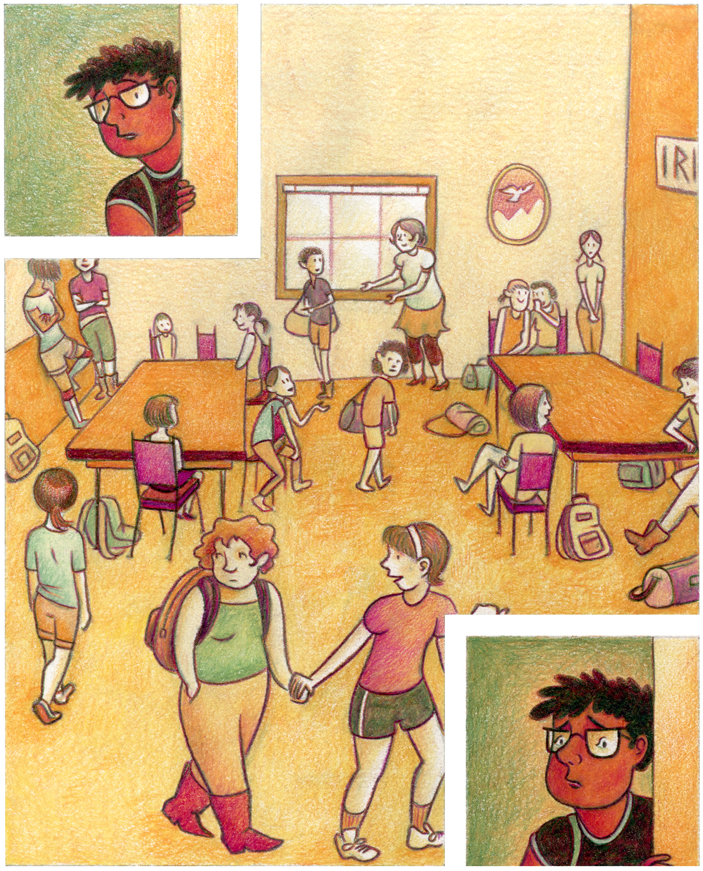
PRE-READING/ANTICIPATORY ACTIVITY
Connecting to Nature The natural environment plays a crucial role in As The Crow Flies. Several times throughout the book, the author chooses to show scenes with no dialog or even human characters. Show students some images of nature (for example, https://www.shutterstock.com/search/nature), and let them describe what kinds of emotions they feel for each. Then, have students preview the pages after the campers’ first night in the woods (pg. 164–173) which show scenery from various distances as well as the hikers and a bit of the main character, Charlie. What emotions do these images suggest to them? What emotions do they think Charlie is experiencing?
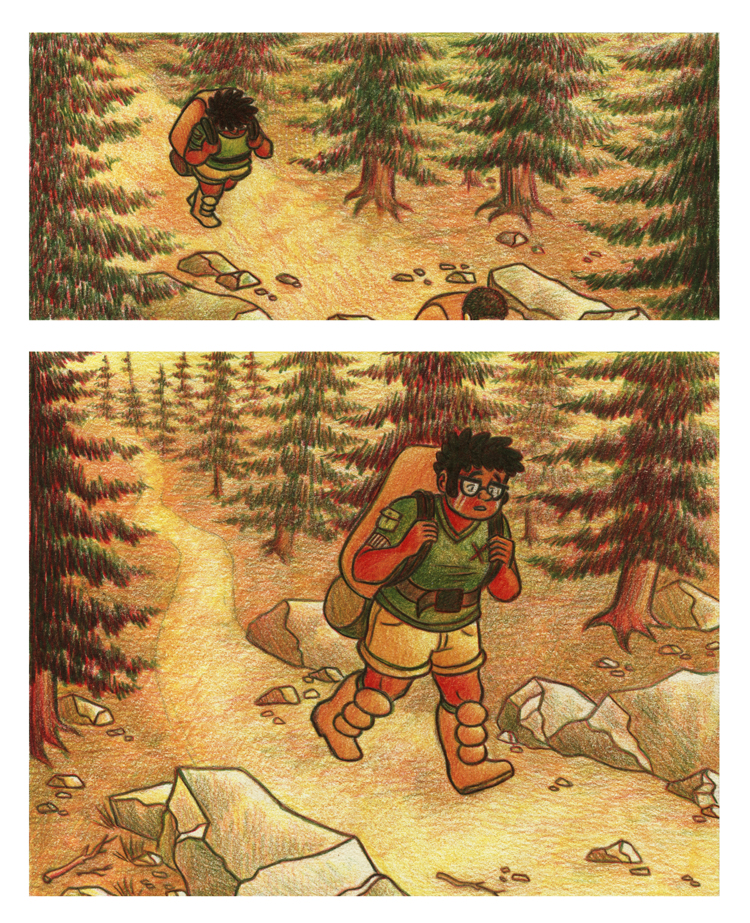
CRITICAL THINKING QUESTIONS BY COMPLEXITY
Remembering
- What was the historic event that inspired the campers’ trek?
- What task do Charlie and Sydney carry out for the group?
Understanding
- What do you think the feather at the beginning of the story means to Charlie?
- After telling the story of the pioneer women, Bee says, “The decisions those women made are part of our history but not our legacy.” What does this mean?
Applying
- The author shows both the challenges and the rewards of being out in nature. Use events or images from the book to make a chart that compares the challenges and rewards. Explain whether the rewards make the challenges worth it in your opinion.
- Charlie doesn’t always know how to share her thoughts with others. How do the people around her make it easier or more difficult to share?
Analyzing

- Towards the end of the book, Charlie chooses to hike alone to have “some quiet time” (p. 215). The author then uses the next several pages to show a variety of images but very few lines of text about Charlie’s thoughts. Describe how Charlie’s thoughts are shown in those images.
- Shortly after Charlie arrives at camp, she tells her parents, “I’m just not sure I’m going to fit in here.” Why do you think Charlie decides to stay?
Evaluating
- Based on Charlie’s experience, what advice would you give the camp leaders about their program?
- The campers and their leaders express different perspectives and opinions. Choose one with which you do not agree. Write a persuasive essay to share your opinion.
Creating
- The book collects part of a webcomic that is much longer. Write a short story, or make a comic or series of images that tells what you think happens next. Read more of the webcomic to see how your ideas compare to the author’s version.
- The saying “as the crow flies” is an idiom for the most direct path between two points. Make a poster for the book that shows how this idiom connects to Charlie’s experience.
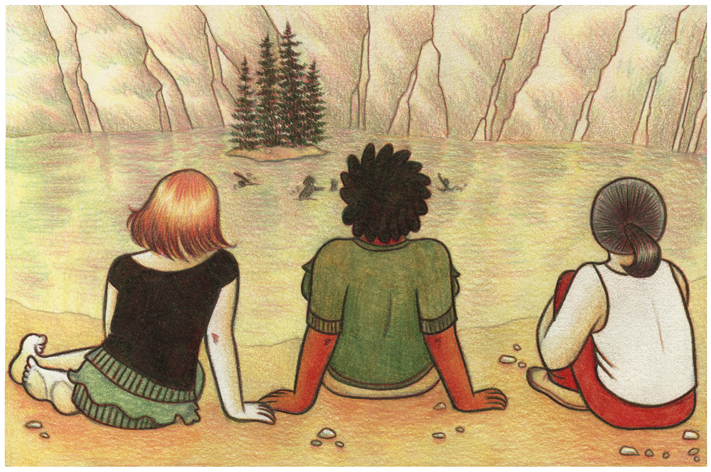
ACTIVITIES/PROJECTS
- Connecting to Nature Revisit the pre-reading activity. Ask students to choose a quote from the text that shows strong emotion. Have them create a poster or digital presentation about the quote that includes a collage of images that reflect the emotion the quote inspires.
- Activism Zine The campers and staff at Camp Three Peaks have strong feelings and opinions about issues important to them. Choose an issue that is important to you. Research the history of the issue and some of the ways people have been involved in supporting or trying to change it. Make a zine or minicomic that explains the issue and how other people can participate. Sample ideas and instructions are here: https://cbldf.org/2020/06/making-mini-comics-for-activism-self-care/
- Socratic Seminar Engage the students in Socratic discussion in whatever form you choose (seminar, online exchange of ideas, debate, etc.) by utilizing one or more of the questions below:
- How do you define “friendship”?
- What does Charlie do to be friends with others at the camp? What do they do to be friends with Charlie?
- What does it mean to trust someone?
- What role does “trust” play in this story?
- What role does “trust” play in our lives as a class/group?
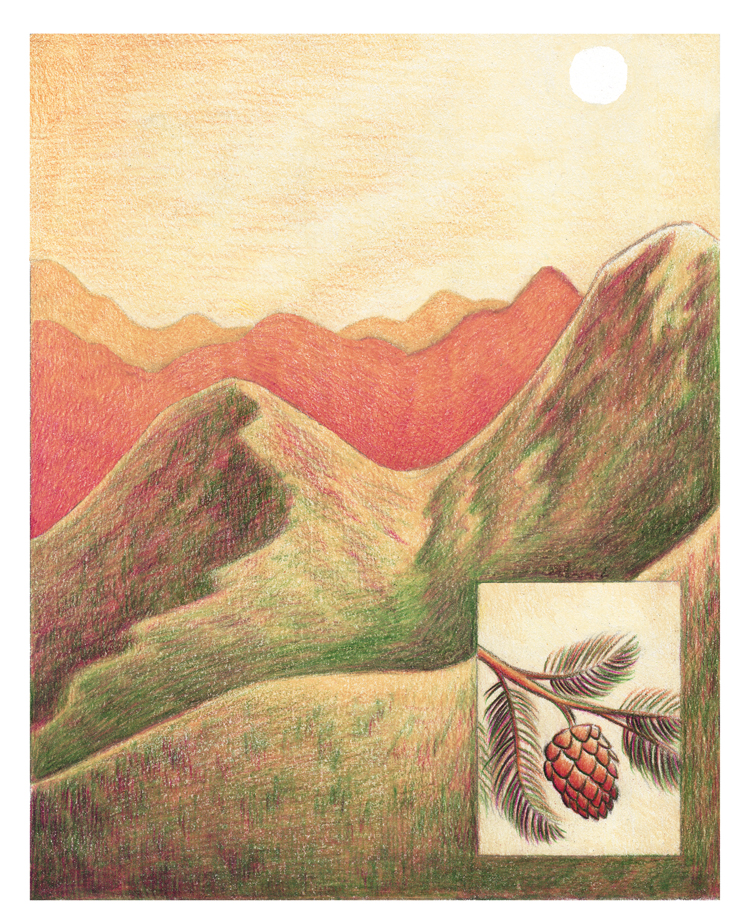
PROSE, POETRY, AND GRAPHIC NOVEL PAIRINGS

Black Enough: Stories of Being Young & Black in America edited by Ibi Zoboi
Written by some of the most acclaimed and bestselling Black authors writing for young adults, this collection of short stories for teens has something for every reader to explore. Includes stories by Tracey Baptiste, Coe Booth, Dhonielle Clayton, Brandy Colbert, Jay Coles, Lamar Giles, Leah Henderson, Justina Ireland, Varian Johnson, Kekla Magoon, Tochi Onyebuchi, Jason Reynolds, Nic Stone, Liara Tamani, Renée Watson, and Rita Williams-Garcia.
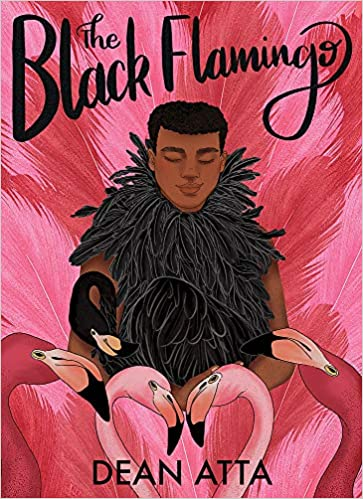
The Black Flamingo, by Dean Atta
Told in accessible verse, this is the story of Michael, a mixed-race, gay teenager from London, who is on a journey to find and express himself. He discovers his voice as a drag artist when he goes to university.
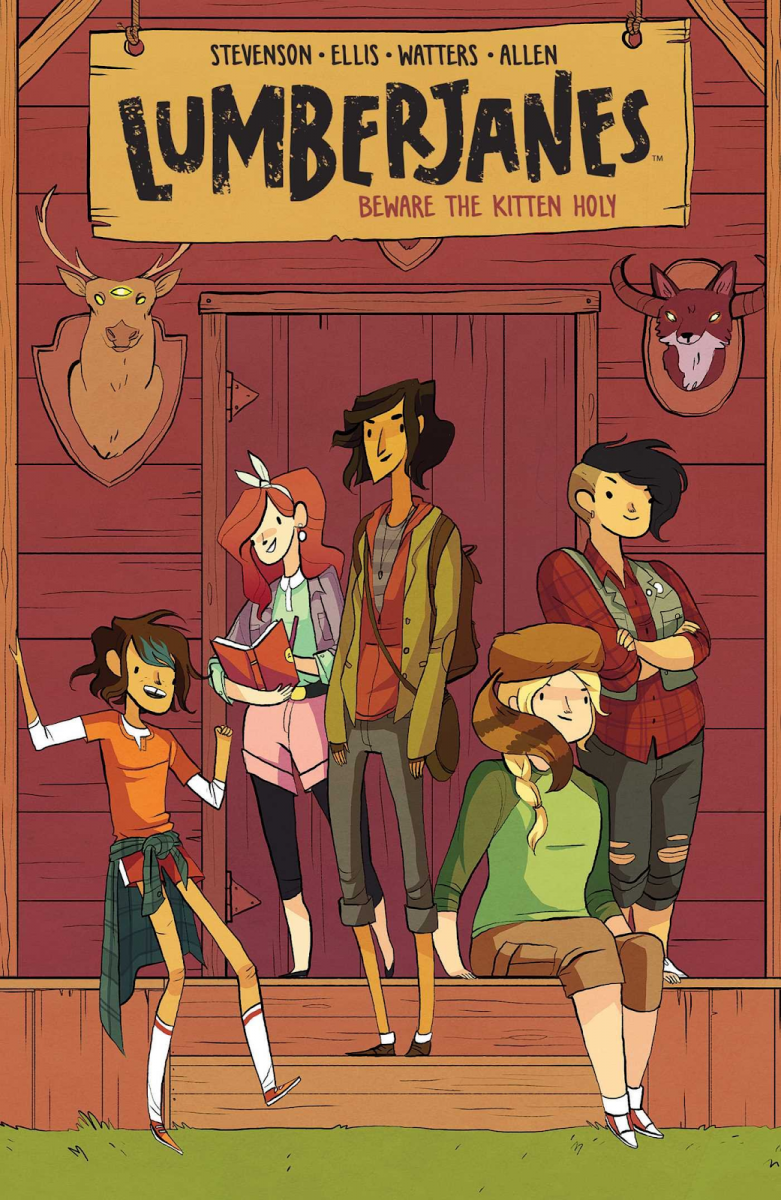
Lumberjanes, by Shannon Watters, Grace Ellis, Brooklyn A. Allen, and Noelle Stevenson
This comic book series centers on friendship and adventures at a wilderness summer camp for “Hardcore Lady Types.” It is filled with humor and adventure as a lovably quirky diverse group of friends tackle wild, mystical mysteries using anagrams, astronomy, and Fibonacci series strategies, mixed in with brain power and pure brawn.
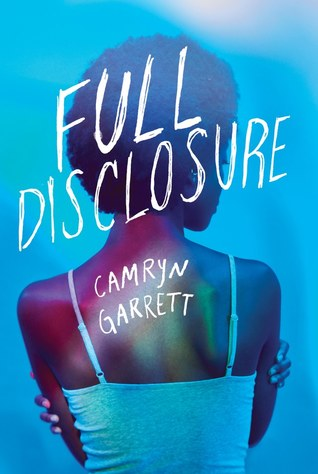
Full Disclosure, by Camryn Garrett Simone
An honest and ultimately positive story of Simone as she navigates the often unaccepting and conflicted world of high school and the additional uncertainties of growing up HIV-positive.
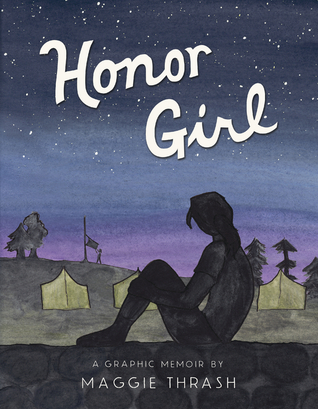
Honor Girl: A Graphic Memoir, by Maggie Thrash
This graphic novel, written and illustrated by Maggie Thrash, is based on her life experiences as a 15 year old returning for another summer at a traditional, all-girl’s summer camp. Soul searching, first love, and identity are all explored.
Poetry:
“Caged Bird” by Maya Angelou
- Evokes both nature imagery and the emotions of one confined from being free.
“The Story” by spoken word poet and activist Andrea Gibson
- Twines together the joys and pains of our relationship to our lives.
ADDITIONAL/LISTED RESOURCES
WEBSITES
- The author’s website: https://www.melaniegillman.com/
INTERVIEWS
- “These Stories Are Out There”— Reclaiming Queer and Trans Histories with Melanie Gillman” interview with The Middle Spaces: https://themiddlespaces.com/2019/12/03/interview-gillman/
- ‘“I concocted a camp that would allow me to talk about subjects I wanted to tackle’ Melanie Gillman talks homophobia and hiking in the Eisner-nominated As the Crow Flies webcomic” interview with Pipe Dream Comics: https://pipedreamcomics.co.uk/interview-melanie-gillman-on-as-the-crow-flies-webcomic/
ADDITIONAL RESOURCES
- Queer Books for Teens—note the database is limited to 2000–2017 http://queerbooksforteens.com/
- Regular book reviews and recommendations for all ages, including this list of “45 Black Young Adult Novels to Add to Your TBR”: https://afomaumesi.com/black-young-adult-novels/
- We Need Diverse Books Campaign list of resources and reads: https://diversebooks.org/resources-for-race-equity-and-inclusion/
- Queer Comics Database: http://queercomicsdatabase.com/
COMMON CORE STANDARDS
Common Core State Standards (CCSS):
Following the teaching and discussion suggestions above, As The Crow Flies can be used in classrooms to meet Common Core Standards, as detailed below. Note that this section uses the Common Core Anchor Standards for College and Career Readiness for Reading, Writing, and Speaking and Listening:
- Key ideas and details: Reading closely to determine what the texts says explicitly and making logical inferences from it; citing specific textual evidence when writing or speaking to support conclusions drawn from the text; determining central ideas or themes and analyzing their development; summarizing the key supporting details and ideas; analyzing how and why individuals, events, or ideas develop and interact over the course of the text.
- Craft and structure: Interpreting words and phrases as they are used in a text, including determining technical, connotative, and figurative meanings and analyzing how specific word choices shape meaning or tone; analyzing the structure of texts, including how specific sentences, paragraphs and larger portions of the text relate to each other and the whole; Assessing how point of view or purpose shapes the content and style of a text.
- Integration of knowledge and ideas: Integrating and evaluating content presented in diverse media and formats, including visually and quantitatively, as well as in words; delineating and evaluating the argument and specific claims in a text, including the validity of the reasoning as well as the relevance and sufficiency of the evidence; analyzing how two or more texts address similar themes or topics in order to build knowledge or to compare the approaches the author takes.
- Range of reading and level of text complexity: Reading and comprehending complex literary and informational texts independently and proficiently.
Discussion and Activity Guide: As The Crow Flies, by Melanie Gillman
Karen Evans is Education Coordinator for CBLDF. She was a classroom teacher for 11 years, a school administrator for three years, and holds a M.Ed. in School Leadership.